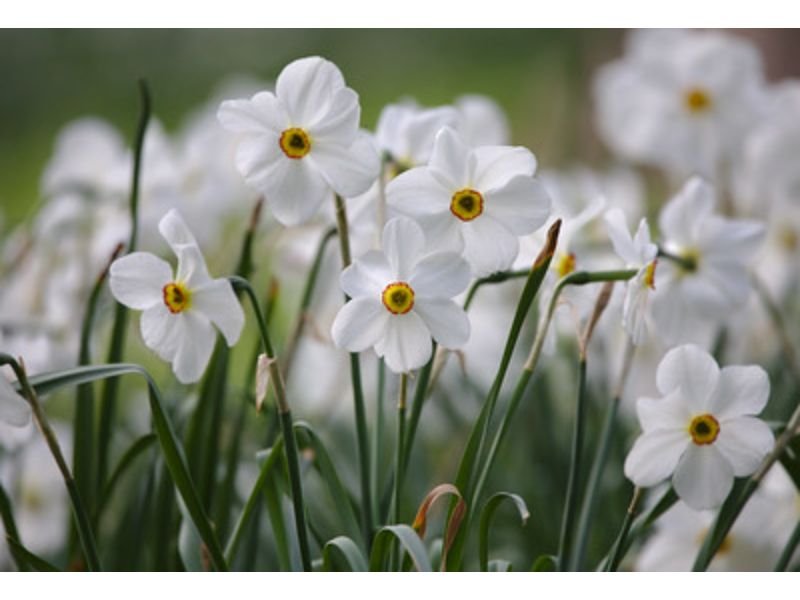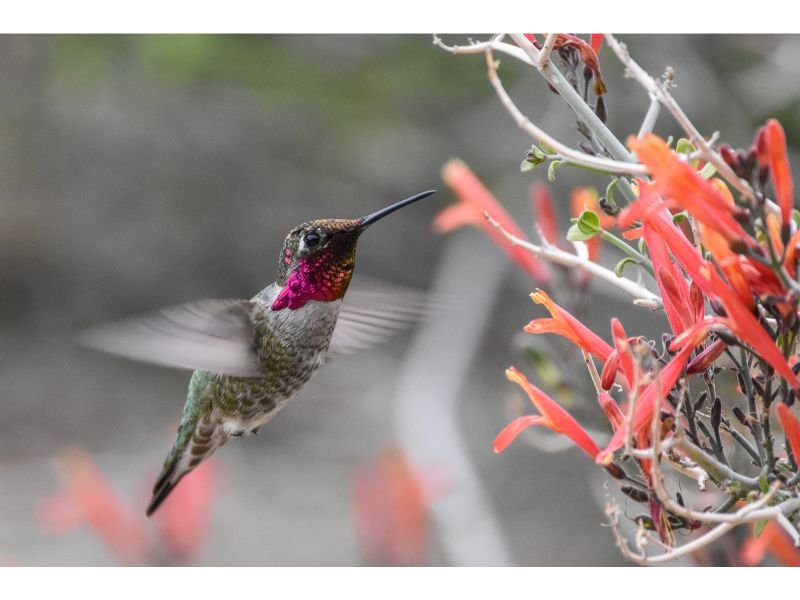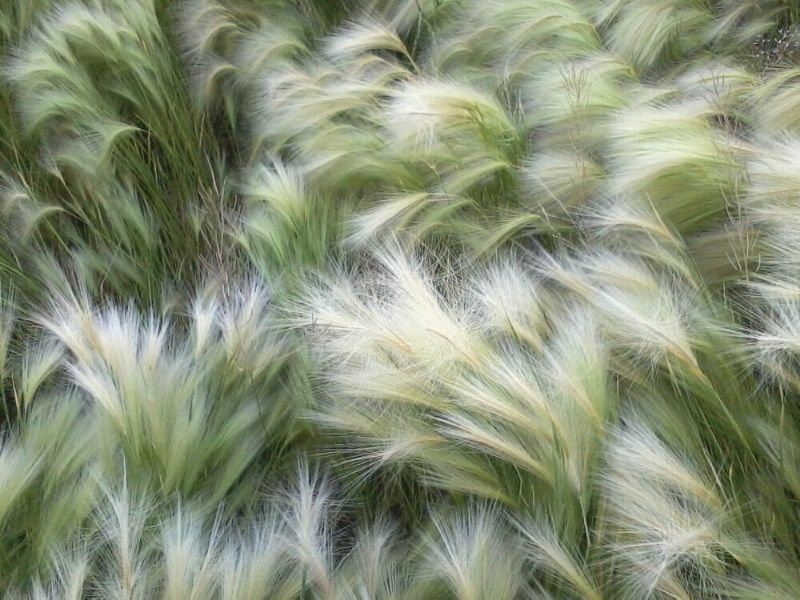Have you ever wondered if those vibrant yellow flowers adorning your garden or the nearby meadow are edible?
The world of edible flowers is a delightful treasure trove of colors, flavors, and culinary possibilities. Among these, yellow flowers stand out with their sunny hues and unique tastes.
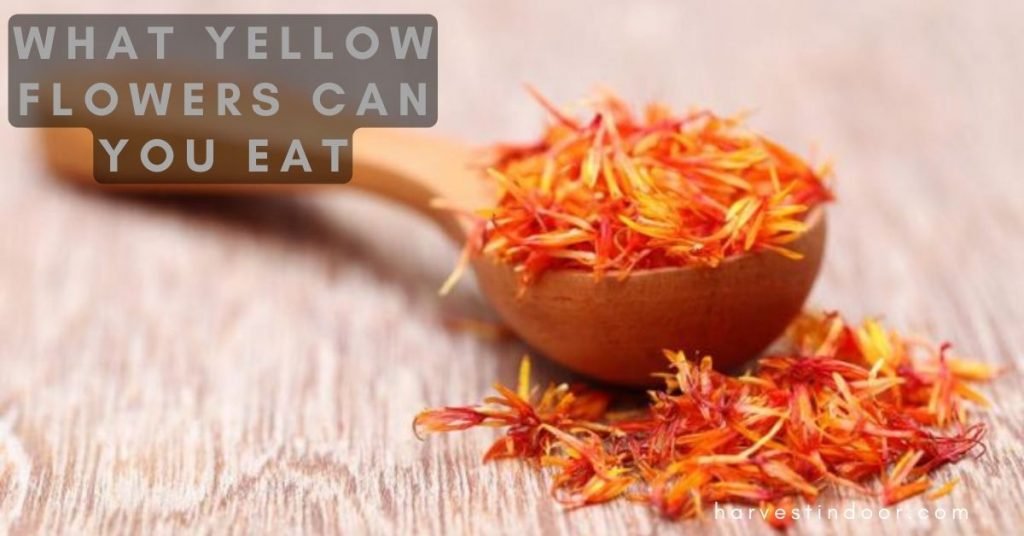
In this article, we will delve into the fascinating realm of edible yellow flowers, exploring various options that can add a burst of color and flavor to your dishes.
From salads to desserts, these blossoms can elevate your culinary creations and turn an ordinary meal into a visual and gustatory masterpiece.
Table of Contents
What Yellow Flowers Can You Eat?
Yellow flowers, with their bright and cheerful appearance, have found their way into cuisines around the world.
Not only do they contribute a visually pleasing element to dishes, but many of them also offer distinct flavors that can range from mild to tangy. Let’s explore some of the most popular edible yellow flowers and discover how they can be incorporated into your culinary endeavors.
Sunflowers
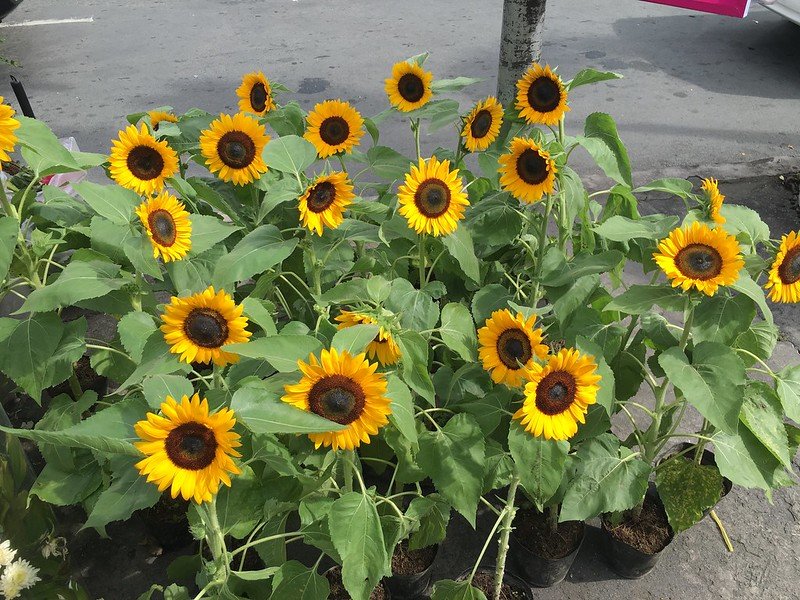
Sunflowers, known for their towering presence and black center, produce edible petals that have a slightly bittersweet taste.
These petals can be used to garnish salads, add a pop of color to desserts, or even brewed into a delicate tea. Their mild flavor profile makes them a versatile addition to both sweet and savory dishes. It is also well-known that sunflowers are considered crops with yellow flowers in some countries.
Marigolds
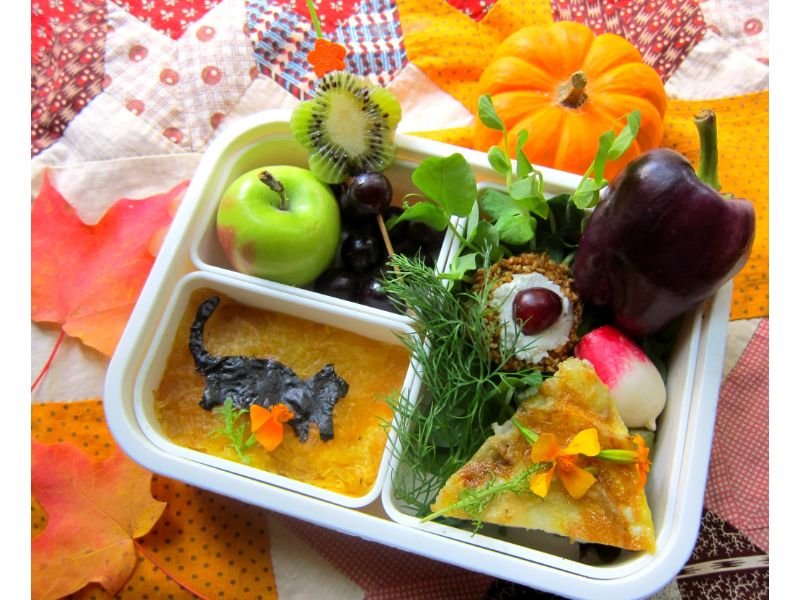
Marigolds are not only prized for their pest-repelling properties but also for their edible petals. These petals have a citrusy and slightly peppery taste, making them an ideal choice for infusing oils, vinegar, or even butter.
Additionally, marigold petals can be scattered over soups, rice dishes, or salads to impart both flavor and aesthetics. What makes this plant even more versatile is their ability to be cultivated in so many different environments, Grow them in the garden, hang them on a basket, or even set them on window boxes, they will survive for sure.
Dandelions
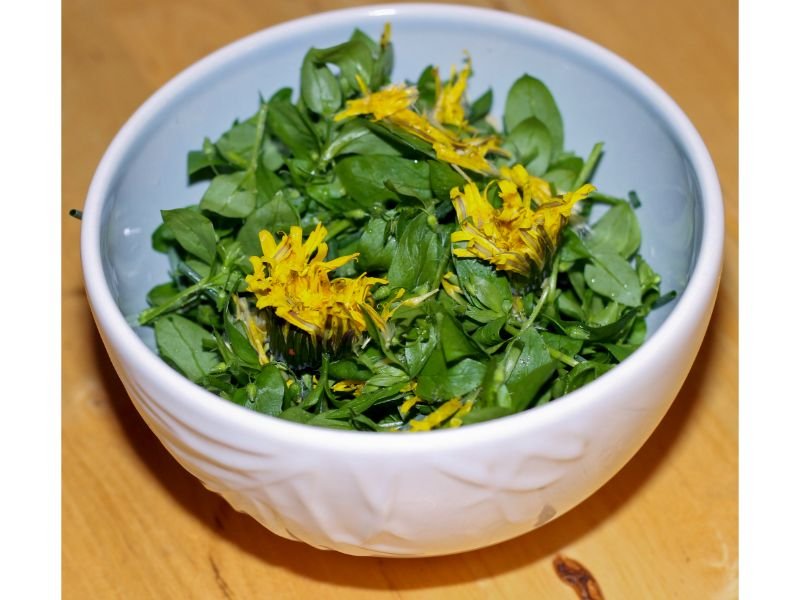
Commonly considered garden nuisances, dandelions surprise many with their edible attributes. Both the bright yellow petals and tender young greens of dandelions are edible.
The petals have a honey-like flavor, while the greens offer a slightly bitter taste. Incorporate dandelion petals into syrups or jams, or use the greens in salads for a unique twist.
Calendula
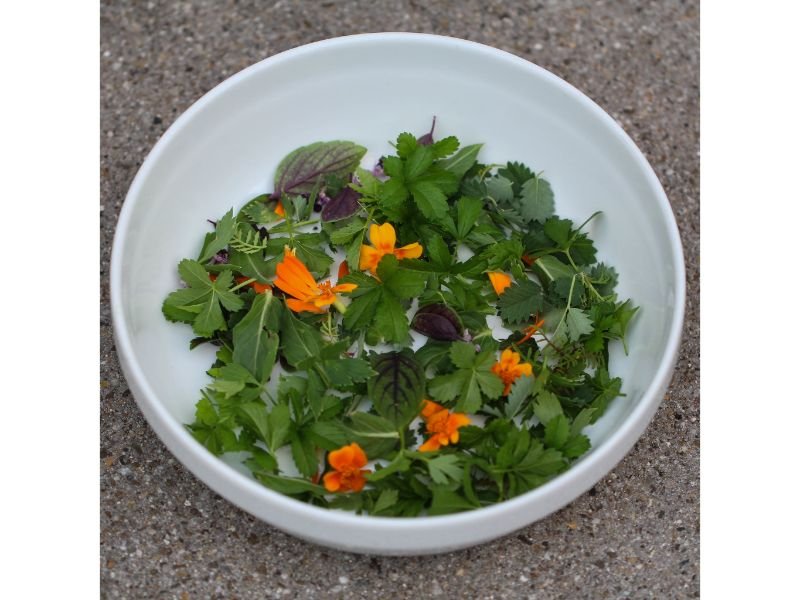
Calendula, often referred to as “pot marigold,” boasts petals with a mild, saffron-like flavor. These petals can be used to lend a golden hue to various dishes, such as rice, pasta, or soups.
Calendula petals are also used to make herbal teas that not only look appealing but also offer potential health benefits. Overall these edible yellow flowers have been cultivated for centuries for their amazing beneficial properties.
Arugula

The yellow and white flowers of the arugula plant are completely edible.
The arugula plant’s yellow and white flowers, composed of four petals, bring a visually unique appeal and a burst of zesty, peppery flavors to dishes. Beyond their striking appearance, these edible blossoms add an unexpected twist to culinary creations, from enhancing salads with their tangy notes to gracing various meals as both a flavor-packed ingredient and an aesthetic garnish.
Embracing arugula flowers in gastronomy offers not only a fresh approach to flavors but also promotes a sustainable farm-to-table connection, reminding us of the diverse and delicious offerings every part of a plant can provide.
Chamomile

Well, this one is not exactly a yellow flower but rather white petals with a yellow center but that counts right?!
Chamomile flowers, known for their calming properties, can also be enjoyed as an edible treat. The small, daisy-like flowers have a subtly sweet and apple-like flavor. Use them to infuse honey, create floral syrups, or brew a soothing chamomile tea.
Yellow Wood Sorrel
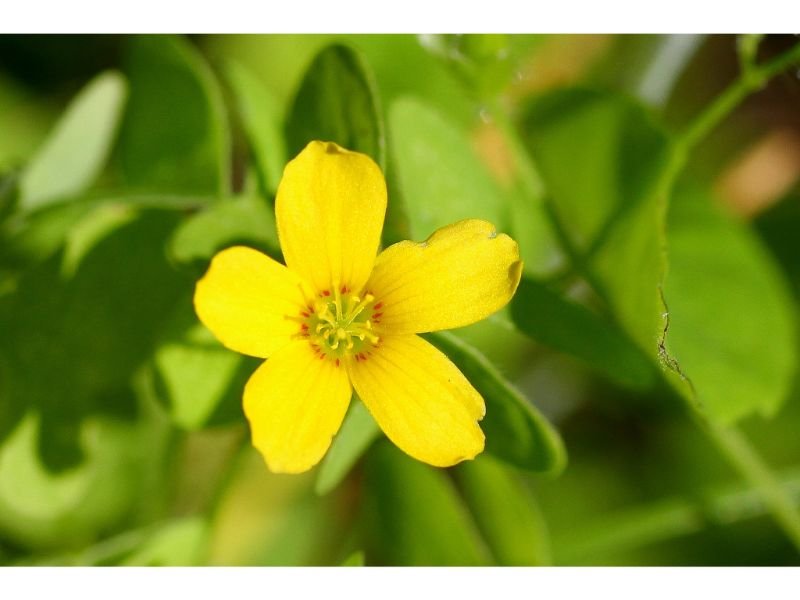
Every visible part of the yellow wood sorrel plant, including its clover-like leaves, stem, flowers, and seedhead, can be consumed. It offers a vibrant, citrusy taste and serves well in salads or as a decorative element in dishes.
Chrysanthemum
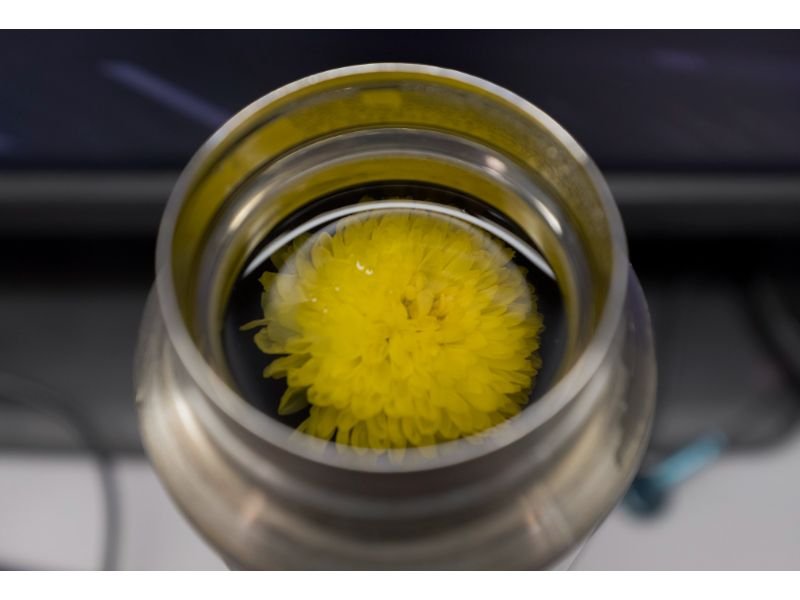
Varieties of chrysanthemums fit for consumption provide both tender young leaves and daisy-like flowers featuring yellow centers. The petals, possessing a subtly tangy flavor, are also edible and can be incorporated into various culinary creations.
One most often used of these edible yellow flowers is as refreshing tea to boost your immune.
Dill
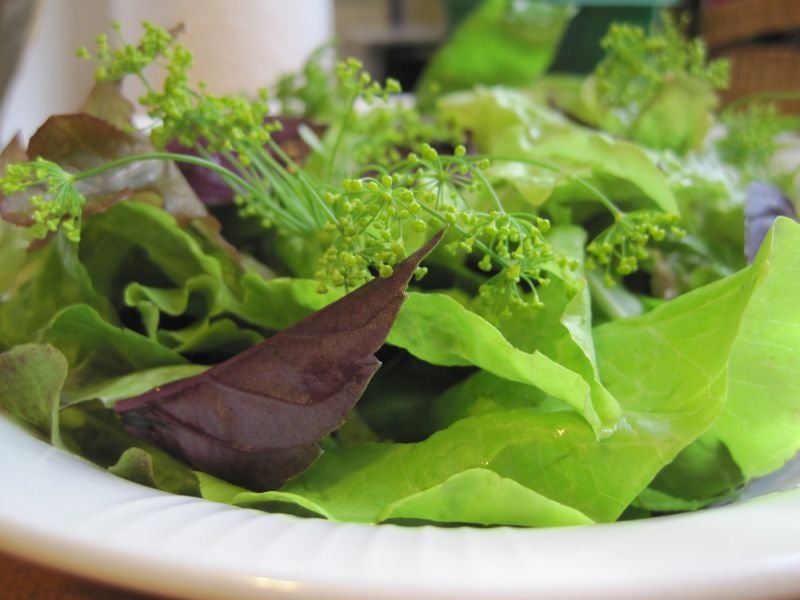
Dill’s blossoms boast a more intense flavor compared to its leaves. They find their place in dishes involving fish or can be enjoyed raw in salads. These small yellow flowers are clustered on tall umbrella-like structures.
English Daisy

Our next flowers might be well-known as edible yellow flowers but they are able to be consumed.
Despite its bitter undertones, the diminutive blooms of the English daisy are entirely ingestible. Its petals make for an interesting addition, adding visual appeal and a touch of bitterness that can enhance salads or other dishes.
Safflower

The dried yellow flowers of safflower are occasionally employed as a natural food coloring. Additionally, fresh petals can be torn and added to salads or soups, contributing both visual allure and a mild flavor.
How to Incorporate Edible Yellow Flowers into Your Dishes
Now that you’re familiar with some of the edible yellow flowers, it’s time to explore the creative ways in which you can incorporate them into your culinary creations. Whether you’re aiming for a visual feast or a burst of flavor, these flowers can elevate your dishes to a whole new level.
Enhance Your Salads
Add a splash of color and flavor to your salads by sprinkling edible yellow flowers over a bed of fresh greens. The vibrant hues of the flowers will not only make your salad visually appealing but also provide subtle taste variations with each bite.
Infuse Oils and Vinegars
Transform your cooking oils and spoonfuls of vinegar into gourmet delights by infusing them with edible yellow flowers. The petals’ flavors will infuse into the liquids, creating a unique and aromatic base for your dressings, marinades, and dips.
Brew Floral Teas
Experience the delicate flavors of edible yellow flowers by brewing them into herbal teas. Combine petals like chamomile or calendula with other complementary herbs for soothing and fragrant teas that are perfect for relaxation or as a refreshing beverage.
Create Floral Syrups
Craft floral-infused syrups using edible yellow flowers to add a touch of sweetness and floral essence to your desserts, beverages, and cocktails. These syrups can be drizzled over pancakes, and waffles, or used as a unique cocktail mixer.
Freeze in Ice Cubes
Capture the beauty of edible yellow flowers by freezing them in ice cubes. These floral ice cubes can be added to beverages, making your drinks visually stunning and keeping them refreshingly cold.
Are there any precautions I should take when eating edible flowers?
When consuming edible flowers, it is important to take certain precautions to ensure safety. Here are some precautions to keep in mind:
- Identify the flowers: Only consume flowers that you are certain are edible. If you are unsure, consult a reliable reference book or expert before consuming.
- Start gradually: Introduce edible flowers into your diet gradually and in small quantities. This allows you to monitor any potential allergic reactions or sensitivities.
- Avoid allergies: People with known allergies to pollen should exercise caution when consuming flowers. It is recommended to avoid consuming flowers if you have pollen allergies.
- Wash thoroughly: Whether homegrown or store-bought, edible flowers should be washed thoroughly before consumption. This helps remove any dirt, debris, or potential contaminants.
- Remove stamens and pistils: Some flowers have pollen-containing stamens and pistils, which can taste bitter and may trigger allergy symptoms in sensitive individuals. It is advisable to remove these parts before consuming.
- Avoid pesticides: Do not consume flowers from florists, nurseries, or garden centers, as these flowers may have been treated with pesticides not intended for human consumption. It is best to grow your own edible flowers or source them from reputable organic suppliers.
- Taste before use: Before using flowers in dishes, taste them to ensure that the flavor is desirable. Different flowers have varying flavors, and it is important to ensure that they complement the dish.
- Use proper plant parts: Only consume the parts of the plant that are known to be edible. Some flowers may have edible petals but other parts are not safe for consumption.
By following these precautions, you can safely enjoy the beauty and flavors of edible flowers in your culinary creations.
FAQs
Are all yellow flowers edible?
No, not all yellow flowers are edible. It’s important to positively identify flowers before consuming them. Stick to well-known edible flowers to ensure your safety.
Can I use any part of the dandelion plant in cooking?
Yes, both the petals and young greens of the dandelion plant are edible. The petals have a sweet taste, while the greens are slightly bitter.
Are there any precautions I should take before consuming edible yellow flowers?
Absolutely. Only consume flowers that are grown organically and free from pesticides. Also, if you have allergies, it’s wise to introduce edible yellow flowers gradually to ensure you don’t have any adverse reactions.
Can I use edible flowers in baking?
Certainly! Edible yellow flowers can be used to decorate cakes, cupcakes, and pastries. Just ensure they are clean and pesticide-free before use.
How do I store edible flowers?
Gently wrap edible flowers in a damp paper towel and place them in an airtight container. Store in the refrigerator to prolong their freshness.
Can I eat the center of the sunflower?
While the petals of sunflowers are edible, the center (seeds) is typically harvested for consumption in the form of sunflower seeds.
Conclusion
Exploring the world of edible yellow flowers is a delightful journey that adds a touch of elegance and flavor to your culinary endeavors. From vibrant marigolds to delicate chamomile, these blossoms hold the potential to transform your dishes into works of art.
Whether you’re a seasoned chef or a curious food enthusiast, incorporating edible yellow flowers into your cooking repertoire can awaken a newfound appreciation for both the visual and gustatory aspects of food.
So, the next time you’re tending to your garden or enjoying a leisurely stroll through nature, remember that the vibrant yellow blooms around you might just be the secret ingredient that takes your cooking to the next level.

Gardening is my passion and growing plants indoors has always been a stress relief for me. Grow a banana tree in my apartment once (although failed to produce bananas).

